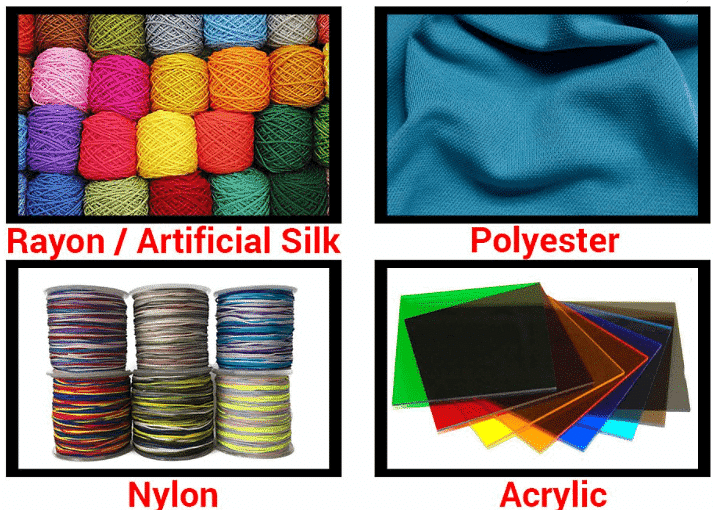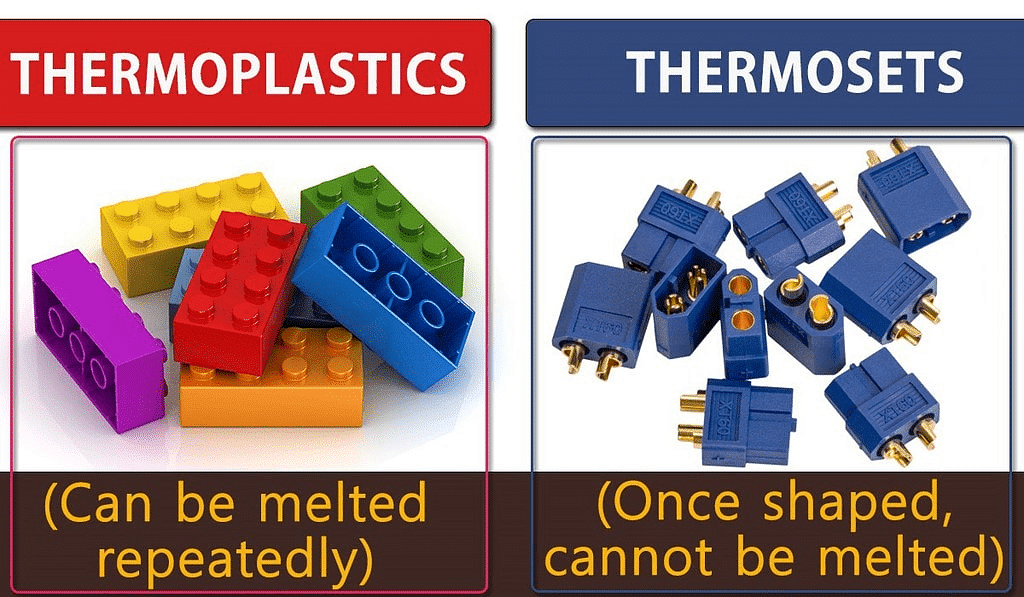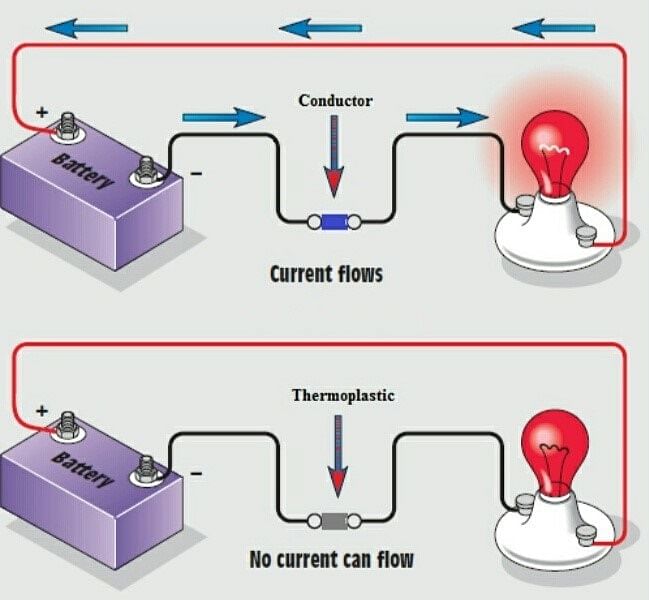NCERT Solutions for Class 8 Science - Synthetic Fibers and Plastics
Exercises
Q1. Explain why some fibers are called synthetic.
Ans:
- The fibers which are not natural and made by human beings are called synthetic fibers as they are manufactured by chemical processing of petrochemicals.

- These are made up of large units known as polymers. Examples of some synthetic fibers are rayon, nylon, etc.
Q2. Rayon is different from synthetic fibers because:
(a) It has a silk-like appearance
(b) It is obtained from wood pulp
(c) Its fibers can also be woven like those of natural fibers
Ans: (b) It is obtained from wood pulp
Q3. Fill in the blanks with appropriate words:
(a) Synthetic fibres are also called ______ or _______ fibres.
Ans: Man-made or Artificial
(b) Synthetic fibres are synthesised from raw material called ________.
Ans: Petrochemicals
(c) Like synthetic fibres, plastic is also a __________ .
Ans: Polymer
Q4. Give examples that indicate that nylon fibers are very strong.
Ans: Nylon is used in making ropes which are used for heavy-duty purposes like mountaineering and parachutes. These examples show that nylon fibers are very strong.
Q5. Explain why plastic containers are favoured for storing food.
Ans: Plastic containers are favoured for storing food because of the following reasons:
- They are easy to handle because of their lightweight.
- They are cheaper when compared to other containers.
- They are strong and durable.
- They are non-reactive to moisture and air.
- They are corrosion-free.
Q6. Explain the difference between thermoplastic and thermosetting plastics.
Ans:
- The shape of thermoplastic can be easily changed by heating again, while the shape of thermosetting plastic cannot be altered once it has been mold into a particular shape. Thermoplastic is used in making toys, combs, containers, etc.

- Thermosetting plastic is used for making those items that need to withstand high temperature such as handles of cooking utensils.
Q7. Explain why the following are made of thermosetting plastics.
(a) Saucepan handles
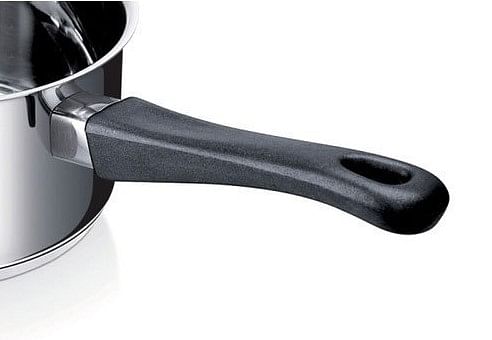
Ans: Saucepan handles have to withstand high temperatures during cooking and thermosetting plastic is ideal for that.
(b) Electric plugs/switches/plugboards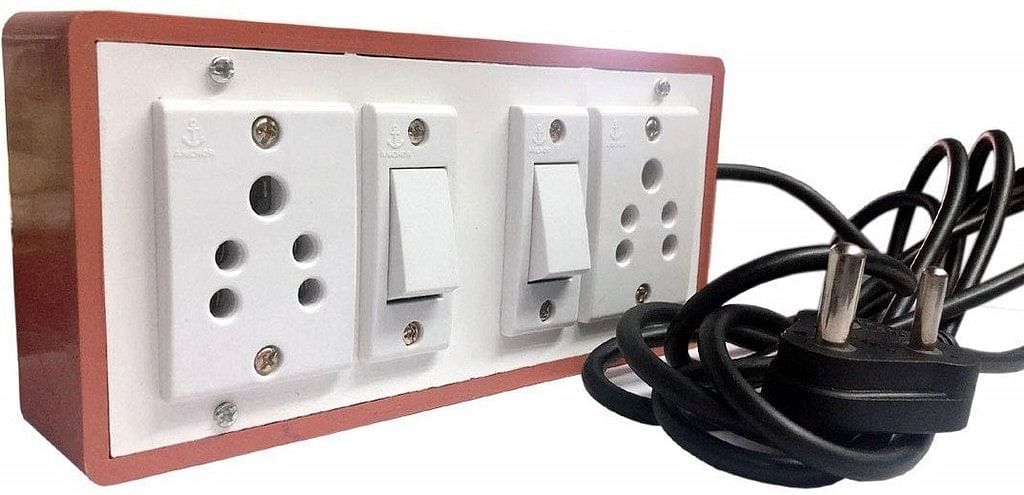 Switch Board
Switch Board
Ans: Electric plugs/switches/plug-boards need to be durable and should withstand continuous use over many years. Moreover, in case of some heating due to electric current; they should not melt. Hence, these devices are made from thermosetting plastic.
Q8. Categorize the materials of the following products into ‘can be recycled and ‘cannot be recycled’:
(Telephone instruments, plastic toys, cooker handles, carry bags, ballpoint pens, plastic bowls, plastic covering on electrical wires, plastic chairs, electrical switches)
Ans:
- Can be recycled: Plastic toys, carry bags, ballpoint pens, plastic bowls, plastic covering on electrical wires, plastic chairs.
- Cannot be recycled: Telephone instruments, cooker handles, electrical switches.
Q9. Rana wants to buy shirts for summer. Should he buy cotton shirts or shirts made from synthetic material? Advise Rana, giving your reason.
Ans:
- Rana is advised to buy cotton shirts for summers because a cotton shirt will absorb his sweat and cotton being a porous material will allow easy evaporation keeping his body cool.
- On the other hand, shirts made from synthetic material will not absorb his sweat, making him feel warmer in summers.
Q10. Give examples to show that plastics are noncorrosive in nature.
Ans: Following are some examples that show that plastics are noncorrosive in nature:
- Plastic containers are used for storing food, chemicals, and other things as they do not react with water and air.
- Teflon is used as a coating on non-stick cookware.
- Bakelite is used for making electric switches and handles of the utensils because it is a poor conductor of heat and electricity.
- Melamine is used for making floor tiles and kitchenware because it is good fire-resistant and can tolerate heat better than other plastics.
Q11. Should the handle and bristles of a toothbrush be made of the same material?
Explain your answer.
Ans:
- The handle and bristles of a toothbrush should be made of different materials. The material which is used for making a toothbrush handle should be hard and flexible because the handle has to withstand a lot of stress and has to reach every corner of the mouth.
- The material which is used for making bristles should be soft, flexible, yet durable because the bristles should not damage the tooth or gum but should last longer.
Q12. ‘Avoid plastics as far as possible. Comment on this advice.
Ans: These days’ plastics have become an integral part of our life.
But, we must avoid plastics as far as possible because 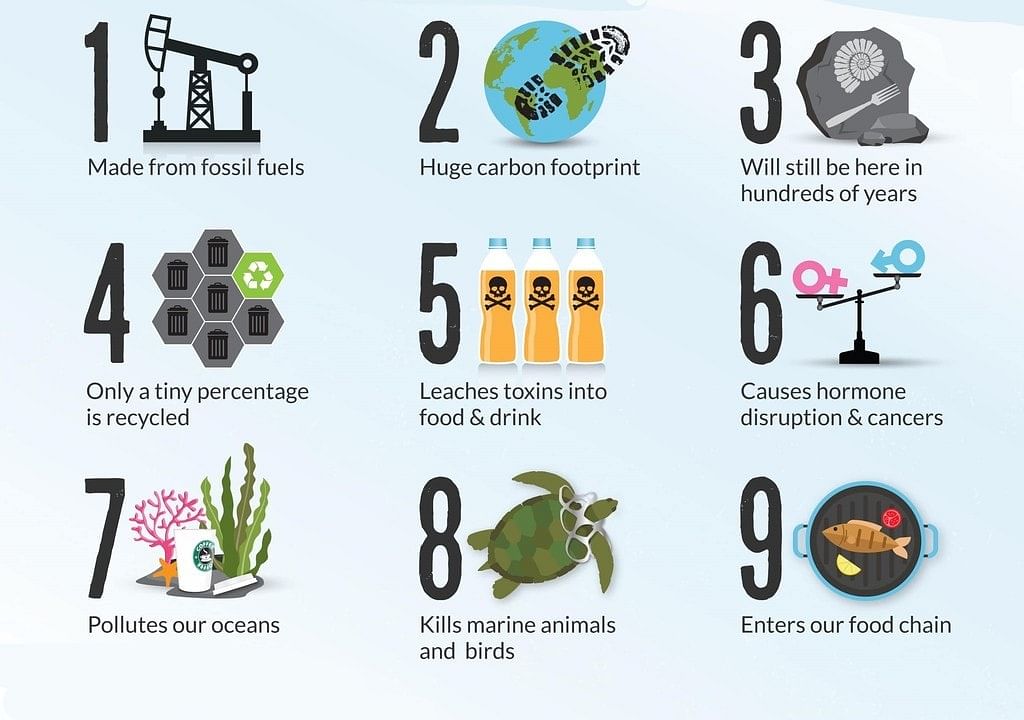
- Plastics are non-biodegradable and so take several years to get decomposed.
- Plastics release lots of poisonous fumes into the atmosphere on burning that cause air pollution.
- The polybags are carelessly thrown are responsible for clogging the drains.
- Animals like cows might consume plastics which might result in choking of their respiratory system and can even cause death.
- Soil pollution is caused because of plastics.
- Threat to the aquatic animals is caused due to the plastics are thrown away into the water bodies.
Q13. Match the terms of column I correctly with the phrases given in column II.
Ans:
Q14. ‘Manufacturing synthetic fibers is actually helping conservation of forests’.
Comment.
Ans:
- Forests provide many important raw materials from which we make various useful items. Many things which were earlier made from forest products are now being made from synthetic fibers.
Example: Plastic chairs have replaced wooden chairs in a big way. Similarly, wooden cartons and crates have been replaced by plastic cartons and crates. - The way plastic has replaced wood from many items, it is definitely minimizing the need to cut forests. Thus, it can be said that manufacturing synthetic fibers is actually helping the conservation of forests.
Q15. Describe an activity to show that thermoplastic is a poor conductor of electricity.
Ans:
- For this, take a discarded plastic toy, a torch which is in working order. Switch the torch on to check that it is in working condition.
- From the plastic toy, cut a small piece about the size of a coin.
 The bulb does not glow when thermoplastic is in between the circuit path
The bulb does not glow when thermoplastic is in between the circuit path - Now insert this coin between two cells of the torch. Then tighten the lid of the torch.
- Now, switch on the torch. You will notice that the bulb does not glow. This happens because the plastic coin; between two cells; does not allow current to pass between two cells.
- This shows that thermoplastic is a poor conductor of electricity.
|
32 videos|80 docs|74 tests
|
FAQs on NCERT Solutions for Class 8 Science - Synthetic Fibers and Plastics
| 1. What are synthetic fibers and plastics? |  |
| 2. What are the advantages of using synthetic fibers and plastics? |  |
| 3. What are the disadvantages of using synthetic fibers and plastics? |  |
| 4. How are synthetic fibers and plastics produced? |  |
| 5. What are the different types of synthetic fibers and plastics? |  |

